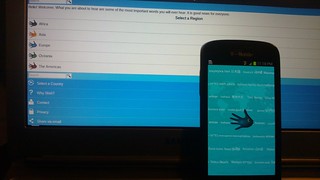Through the recent MMF Consultation, we connected with the group Christ for All Peoples. They are one of very few organizations whose missional impact takes the perspective of reaching out to immigrants, and letting that influence put them in the position to go to various people groups around the world. During our time chatting, one of the pieces of information shared came from the website Finishing the Task which not only impressed the state of the missions movement, but also begs the questions if/when/how mobile can help finish the task.
Unreached People Groups (PDF) from Finishing the Task
Some years ago, we talked about realistically looking at the impacts of mobile. I think this dataset allows for us to revisit that question, and then ask of our methods and activities if we are engaging the technology and behaviors of mobile correctly in order to finish the task. As we stated on the panel at the MMF Consultation – information is not transformation. We cannot make a mountain out of distribution methods, and do nothing about lifestyle. We cannot just put a bible on a device and expect that literacy rates will rise and with that people will engage Christ. There’s something a bit more… detailed about the point of using mobile that our methods in mobile ministry have to speak towards. And when they do, then we see without a doubt that mobile ministry is truly effective.
So, for your organization, what about mobile directly or indirectly finishes the task of getting the Gospel to the ends of the earth?




